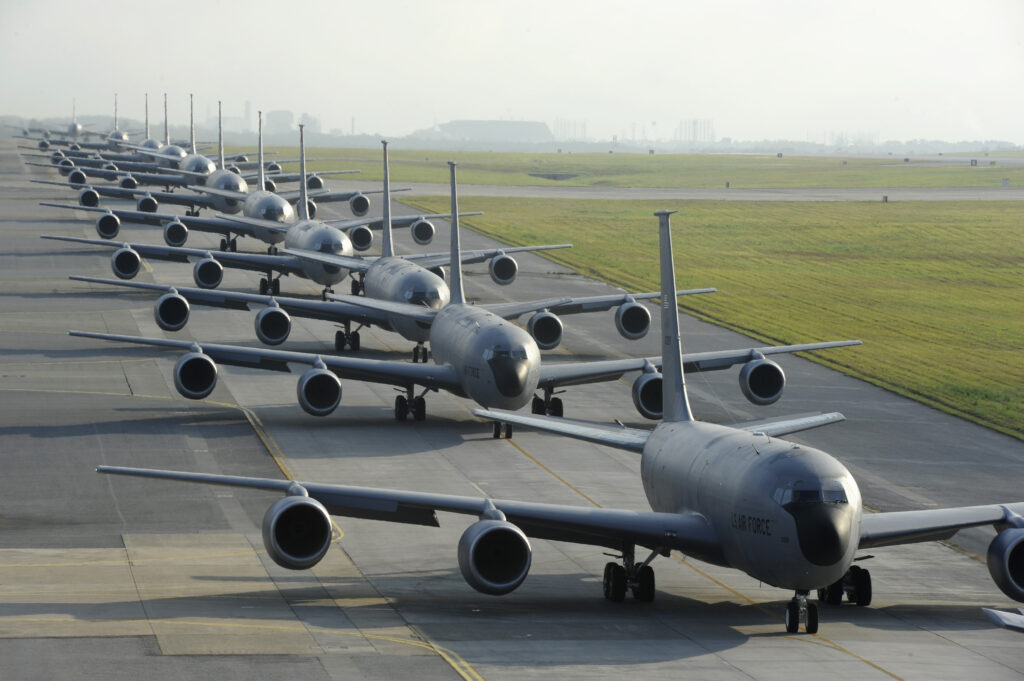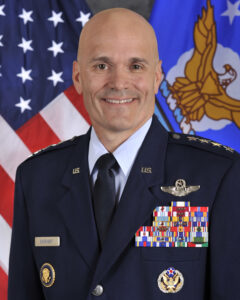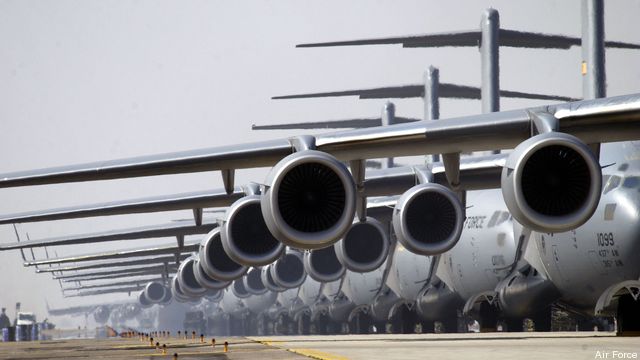US Needs More Tankers, Transports Since Russia & China Can Shoot Them Down
Posted on

Air Force KC-135 tankers lined up on the runway in Kadena, Japan.
AFA: The Air Force needs more tankers and transports because a sophisticated enemy like Russia or China can shoot them down, the chief of Air Mobility Command said here. The current fleet size is based on war plans that only considered how much fuel, supplies, equipment, and troops the air fleet needed to move from A to B, Gen. Carlton Everhart told reporters. The assumption was that no enemy could challenge our control of the skies, which made sense against the Taliban or the Islamic State. But now, as nation-state adversaries increase their anti-aircraft firepower, planners are for the first time factoring in wartime “attrition” – i.e. downed planes and dead crews – for tankers and transports.

Gen. Carlton Everhart
That will almost certainly increase the number of those planes the military needs, Everhart said. It will also drive investments in defensive systems, he said, from lasers that can shoot down incoming anti-aircraft missiles to a mysterious “cloaking device” that might make even huge aircraft like tankers and transports harder to detect on radar.
“Right now (with) mobility assets, we don’t do attrition. Don’t ask me why,” Everhart said at a roundtable with reporters. (There’s actually a long history here – see below). “I can’t figure that out: why was attrition never built into models? Now it’s going to be – and that’s gonna change the equation.”
The current objective for tankers, for example, is 479 aircraft, he said. “Based off the scenarios I’ve seen, I think it’s a floor.”
How many more planes do we need? “I don’t know,” Everhart told a few reporters lingering after the round table. “If you want to build in attrition, is it 10 percent, is it 2 percent, is it 5 percent, is it 3 percent?”
“The aircraft that we have right now meet those plans (i.e. the current plans without attrition factored in). We do have some risk in some areas and in other areas we’re better, but for the floors, we’re pretty good with those numbers: the 275 to 300 C-130s, the 479 tankers. We’re okay,” Everhart said. “When you start building in the attrition piece of it, I don’t know what that is.”
“It’s all got to be modeled out,” Everhart went on, “and it depends on what AOR it’s going to” – that is, the Area Of Responsibility. Each theater has a unique geography and a unique adversary, be it Europe against Russia, the Pacific against North Korea or China, or the Mideast against Iran. The war plans need to calculate losses to enemy fighters, especially advanced stealth aircraft like China’s J-31, and to anti-aircraft missiles like the Russian S-400 and Chinese HQ-9. They need to adjust planned flight paths to avoid the high-threat airspace known as Anti-Access/Area Denial (AD/AD) zones. They even need to factor in non-physical effects such as cyber attacks disrupting US command, control, and logistics networks.
“Somewhere we’ve got to set a baseline,” Everhart said. “I don’t know what that baseline is right now. What we’ll probably do is take an average of all the modeling.”
Preliminary work is underway, but Transportation Command, OSD’s Cost Analysis & Program Assessment (CAPE) office and other agencies won’t issue the formal planning assumptions until 2018. So the new war plans won’t be done until 2020, Everhart said, in time for the 2021 budget.

Air Force C-17 transports ready to deliver forces to Iraq.
From Old Assumptions to New Technology
Why haven’t we done this before? Since most US forces have to cross an ocean just to get to a fight, US war planning has traditionally emphasized nitty-gritty logistics over high-flown strategy. That kind of planning culture is not a bad thing in itself. Germany’s failure to capture Paris in 1914 or Moscow in 1941 was in part the product of generals drawing grand maneuvers on the map that their troops couldn’t get enough fuel, food, bullets or clothing to execute on the ground. By contrast, US logistics were so lavish they sometimes went overboard, accumulating “iron mountains” of supplies in Mideastern deserts and building fast-food restaurants on forward bases.

German forces in the Russian winter.
Since 1945, however, US logisticians haven’t faced an enemy who could sink their ships or shoot down their planes. That’s allowed planners to focus on efficiency – maximum supply for minimum cost – and neglect survivability.
Tanker aircraft are actually just modified civilian airliners, providing vital fuel to exquisitely designed 5th Generation stealth fighters. Even purpose-built military transports like the C-17 are easy to detect on radar and very lightly defended. Those are both things Everhart wants to change.
“You all laughed at me when I talked about a laser,” Everhart told the roundtable, “but I’ve got to put defensive systems on that airplane.” Would this be a relatively low-power laser that can dazzle the sensors on an incoming missile, like a souped-up DIRCM (Directional Infra-Red Counter-Measure), or a more powerful weapon that could actually shoot the missile down? “It could be all of the above,” he said.
As for making tankers and transports harder to detect on radar, that runs into some fundamental problems of physics. An aircraft needs to be designed for stealth from the ground up, with every feature designed to minimize radar return, which drives the distinctive, sleep shapes of B-2 bombers and F-35 fighters. By contrast, said Everhart, “I’ve got big airplanes with big, fat wings that you can see a long way.” Making them stealthier requires a very different approach, he said, some kind of “cloaking device” that diffuses the radar energy.
Is that even possible outside of Star Trek? “We quickly get into the classified world, but I think there’s capabilities out there,” Everhart said. “I just need to get a testbed.” He’s been talking to industry about possible technologies both at AFA and at earlier industry days.
To get new technology and additional aircraft, though, Air Mobility Command ultimately has to go ask for more money. “Yes we do,” Everhart said with a rueful chuckle. “Welcome to my world. I fight that battle every day.”
Subscribe to our newsletter
Promotions, new products and sales. Directly to your inbox.
